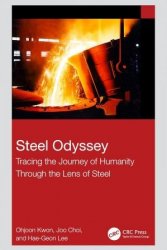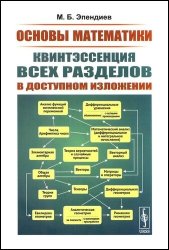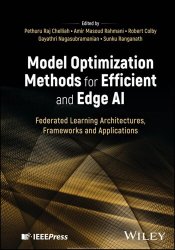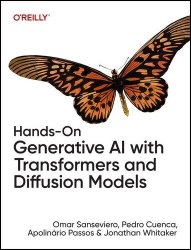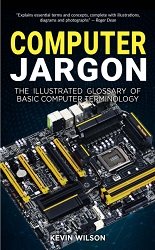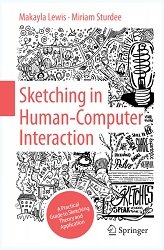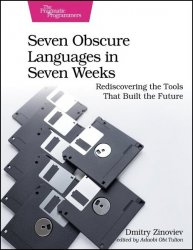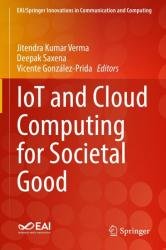 Название: IoT and Cloud Computing for Societal Good
Название: IoT and Cloud Computing for Societal Good Автор: Jitendra Kumar Verma, Deepak Saxena
Издательство: Springer
Серия: EAI/Springer Innovations in Communication and Computing
Год: 2022
Страниц: 331
Язык: английский
Формат: pdf (true), epub
Размер: 35.9 MB
Internet of Things (IoT) and Cloud Computing are two recent innovations that have transformed business and industry. This book gathers the state-of-the-art for industrial application of scientific and practical research in the Cloud and IoT paradigms to benefit society.
The book is organized into four parts focusing on different aspects of IoT and cloud computing:
Part I focusses on perhaps the most important aspect that has the widest societal implications – on tackling climate change. Cloud computing infrastructure requires massive amount of energy, sometimes exceeding the requirement of a mid-size town. In this regard, Chap. 1 discusses research directions and methodological approach towards energy-efficient cloud computing...
Part II of the book covers a variety of applications from diverse domains. Chapter 6 provides a general introduction to applications from areas such as agriculture, health, and military. Chapters 7 and 8, respectively, focus on the use of Artificial Intelligence and personal assistants in the domain of digital health...
Part II of the book covers a variety of applications from diverse domains. Chapter 6 provides a general introduction to applications from areas such as agriculture, health, and military. Chapters 7 and 8, respectively, focus on the use of artificial intelligence and personal assistants in the domain of digital health. Moving to digital learning, Chap. 9 discusses the application of digital technologies in the area of corporate learning, and Chap. 10 takes an applied perspective and examines the behavioral intentions of Generation-Z towards the adoption of digital learning applications. Chapter 11 looks at how IoT and smart factories underpin lean manufacturing in the context of Industry 4.0.
Part III deals with the optimization of existing IoT and cloud technology. Chapter 12 discusses multi-modal feature analysis for precise human hand gesture recognition. This would find useful application particularly in the domain of virtual reality. Chapter 13 offers plausible risk management models for the integration of cloud and IoT by calculating the optimal frequency of maintenance, addressing an important infrastructural issue in IoT and cloud. Chapter 14 focusses on the provision of middleware for IoT protocol interoperability. This is crucial since currently IoT protocols are not standardized. Chapter 15 moves towards a more intangible asset of information and discusses how active influential nodes can be mined to assess information diffusion in social networks.
Finally, Part IV of the book deals with the security and privacy in IoT and cloud computing. Chapter 16 discusses the application of artificial intelligence for enhancing security of IoT devices. Chapter 17 takes an outward perspective by focusing on cyber-attacks, attack vectors, and remedies in the context of IoT devices. Chapter 18 proposes a privacy-secure link utilization routing algorithm for improving performance in IoT and cloud computing. Finally, Chap. 19 outlines the design of a smart home appliances controlling application with a highly secretive system to ensure privacy.
For deploying IoT in network, incompetent and ignored behaviors cause problems because these devices should be deployed in dedicated isolated environment, but an administrator typically installs them in integrated environment with traditional IT components that could lead lateral movement to these devices if any IT device is compromised. Default Settings: Default credentials as set by vendors are common and guessable, and consumers don’t consider to change them at installation. Since legacy and critical protocol such as DICOM (Digital Imaging and Communications in Medicine) in medical imaging and information management are employed in IoT application that are vulnerable to cyber-attacks, this attack vector constitutes a major chunk of IoT attacks. The top targeted ports on IoT attacks for example are Port 23 and Port 22 that are utilized for remote access via exposed telnet and relatively secure SSH protocol. Attackers desperately brute-force the vulnerable devices with common user name and password combinations to gain remote access and control the device to perform unauthorized activity. Telnet is rarely used outside the scope of IoT devices. As per the reports of security researchers of F-secure, 497 million hits on Telnet port are observed during the first half of 2020 as visible with some other targeted ports.
The book is targeted towards advancing undergraduate, graduate, and post graduate students, researchers, academicians, policymakers, various government officials, NGOs, and industry research professionals who are currently working in the field of science and technology either directly or indirectly to benefit common masses.
- Presents the latest developments in Cloud computing and Internet of Things and how they can be used for societal advancement;
- Establishes links between interdisciplinary areas where IoT and Cloud both play a key role for improving process and related application;
- Provides insights of non-IT related models for improvement in lives of the general public.
Скачать IoT and Cloud Computing for Societal Good
[related-news] [/related-news]
Комментарии 0
Комментариев пока нет. Стань первым!
![Code of Practice for Programme Management in the Built Environment, 2nd Edition [b]Автор:[/b] CIOB Code of Practice for Programme Management in the Built Environment, 2nd Edition [b]Автор:[/b] CIOB](/uploads/posts/2024-11/thumbs/1732869330_th_pwsabxieuqceiglzmtmz4l7oylxwncni.jpg)
